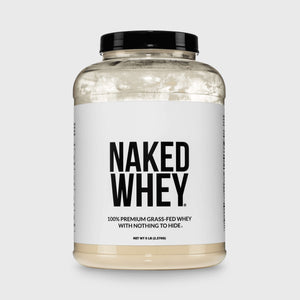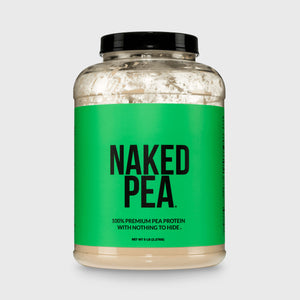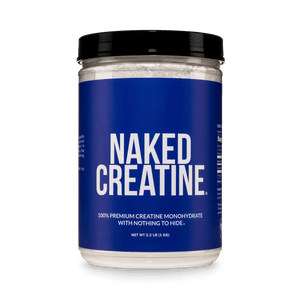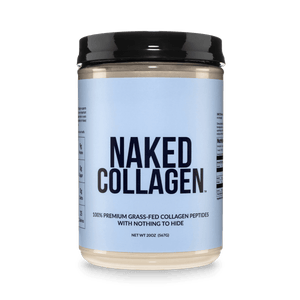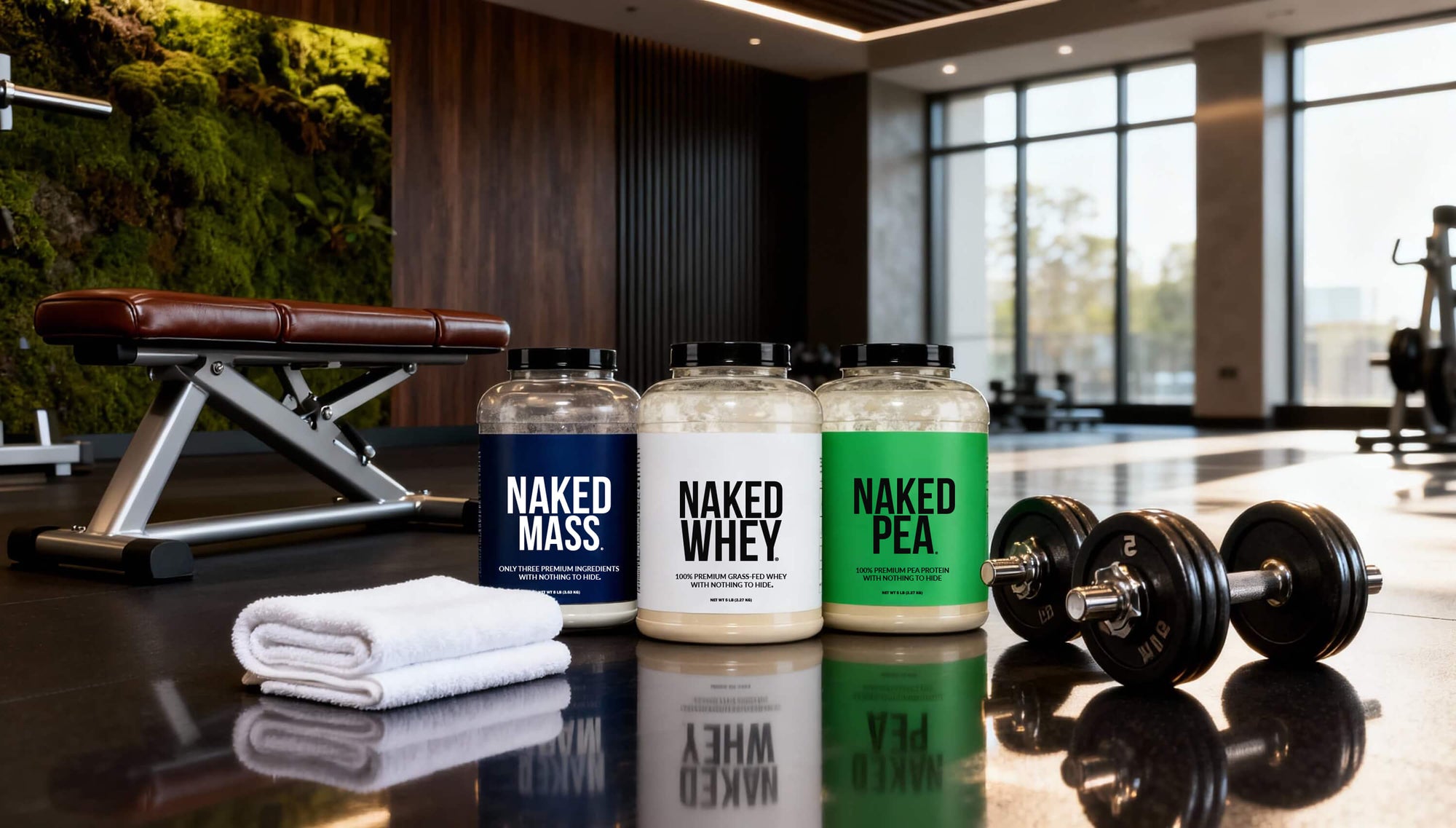The debate between free weights vs weight machines has been a hot topic in the fitness community for decades.
The decision of free weights or machines can be tricky because both free weights and machines target certain muscle groups and have their own set of benefits and drawbacks.
While there is no one-size-fits-all when it comes to strength training, both free weight exercises and weight machine workouts offer unique benefits and drawbacks for strength training. Understanding the differences is essential for anyone looking to optimize their training routine and target specific muscle groups.
Keep reading and we'll dive into the most notable differences between free weights and weight machines, discuss the pros and cons of each, and ultimately help you choose the right way to attack your workouts.
After reading this article you should have a better understanding of free weights and machines, and which might be best for you for your strength training goals.

Free Weights vs Machines - What's the Difference?
Before diving deeper, it's important to understand what's meant by free weight exercises and weight machines.
Both free weights and machines are types of equipment used for strength training.
Free weights include equipment like dumbbells, barbells, and kettlebells that allow you to move them freely through space.
This freedom engages stabilizer muscles and enables versatile, functional movements that can target a variety of specific muscle groups.
On the other hand, weight machines have a predetermined range of motion, guiding your movement through fixed paths. Weight machines can also help target specific muscle groups.
Common strength training equipment you'll see in the gym include leg press, chest press machine, smith machine squat, and lat pulldown machines.
Free Weights vs Machines: Do They Work The Same Muscles?

Both free weights and weight machines usually work the same core muscle groups.
However, free weight exercises require you to stabilize the load and utilize smaller stabilizer muscles.
This means, in addition to your target muscles, smaller stabilizing muscles, as well as your core, have to work hard to keep proper form and ensure the movement is controlled and balanced.
The movement patterns with a weight machine is controlled along a fixed path, which isolates a certain muscle group or set of muscles, but doesn't recruit the stabilizer muscle groups and core in the same way.
For example, a leg press machine allows you to engage your lower body strength in a fixed range of motion. Machine based movements do not engage the stabilizing muscles in the same way that a free weights vs machines workout would.
Free Weights Vs. Machines: Can You Build Muscle with Weight Machines Only?

You can 100% build muscle only using weight machines.
As long as you put your muscles under some form of resistance, meaning the machine's weight resistance is great enough, you will be able to induce hypertrophy (aka muscle growth).
In fact, building specific muscles may actually be easier with weight machines, as weight machines make it easier to isolate a certain muscle group and work out safely with higher weight and more resistance.
Finding a personal trainer can be a great way to learn how to best set the machine's weight to your body's needs.
Machines and free weights are both great ways to encourage muscle hypertrophy and the choice between the two may come down to your individual needs. The next sections will outline the pros and cons of working out with free weights as well as the pros and cons of working out with machines.
Pros and Cons of Working Out with Free Weights

Machines and free weights are great ways to build more muscles. There are different exercises performed depending on the equipment of choice. Let's look at the arguments for and against working out with free weights.
The Benefits of Using Free Weights
On the plus side, free weights excel at building functional strength by engaging multiple muscle groups, target stabilizing muscles, and encouraging natural movement patterns.
Free weights are versatile, allowing for a wide variety of exercises, from compound lifts that work several muscles at once to dynamic movements that challenge balance and coordination.
Free weights are also cheaper and more accessible. You can easily get a couple of dumbbells or a kettlebell to work out at home with, while to use weight machines, you'll typically need access to a gym (and smaller gyms may have a limited variety of weight machines).
Additionally, it's easy to swap out for lighter weights to fit your personal preferences when it comes to your workout. Plus, using lighter weights can often be helpful to ensure proper form.
The Downsides of Using Free Weights

In terms of cons, the open nature of free weight exercises means that maintaining proper form during strength training is crucial, and there's an increased risk of injury, particularly for beginners or people recovering from injury.
It also means the safe upper limit for what you can lift with free weights is lower, and thus it may take longer to build muscle with your given strength training equipment.
Using free weights vs machines means a greater range of motion which can potentially lead to a higher risk for injury.
Using free weights is more likely to cause fatigue since it is more likely to engage the entire body. So in some ways you're getting more bang for your buck, but on the other hand the fatigue may make it more difficult to power through a workout.
Pros and Cons of Working Out with Weight Machines

As with most things in life, there are pros and cons and same goes for using exercise machines to target different muscle groups with your strength training routine.
The Pros of Working Out with Machines
The advantage of machines is that they're designed with user safety in mind, making them an excellent option for those new to strength training or recovering from an injury.
Their guided motion helps maintain proper form and allows for targeted isolation of muscle groups, which can be beneficial for bodybuilding and rehabilitation.
It's also easier to use more weight with machines, because the risk of injury (such as damaging stabilizer muscles/joints, or dropping the weight) is lower.
It's also easy to continue adding more weight to the machine to increase the difficulty of the movement and further engage your muscles.
The Downsides of Machines
While the restricted range of motion can be a positive, it can also be a drawback.
This restriction can lead to a lack of engagement of the smaller stabilizing muscles, potentially resulting in imbalances.
Additionally, the fixed patterns may not always mimic natural movements, possibly reducing the overall functional benefit of working out with machines.
Plus, there's often a learning curve with machines and recreational athletes may not know how to properly use the machines without instruction from a personal trainer.
Free Weights vs Machines: What the Science Says

What does the science say about the advantages of each machines and free weights?
In one study comparing the effect of training with free weights vs machines on muscle mass, strength, free testosterone, and free cortisol, there was found to be minimal to no difference in muscle mass and strength in the free weights group vs the machine group.
The same study found that there was no difference in the cortisol response between the free weights group compared to the machine group.
Lastly, they found a greater increase in testosterone in men who were in the free weights group compared to those in the machine group.
In another study looking at the effectiveness of free weights vs machines in novice adult males, both training methods delivered similar results in muscularity, strength, and functional ability.
Another study suggests that free weight squats may be more effective in building lower-body power than the leg press machine for men. However, a different study found the opposite result (machine squats more effective than free weights) for women.
Free Weights Vs Machines: Which is Most Effective For Training?

The key thing to remember is that your fitness goals as well as your fitness level will shape your workout regimen.
For some people, free weights will be better, while for others, machines are ideal. As long as muscle activation is occurring, you can be assured that your muscles are working hard.
If your goal is maximum strength and power, free weights are often the best choice, due to their ability to mimic real-world movements, engage the core, and engage stabilizer muscles.
In contrast, if muscle hypertrophy or targeted muscle growth is your primary goal, machines can be ideal, as they make it easier to isolate and fatigue specific muscles safely.
If your fitness goals are focused on rehabilitation or injury prevention, machines offer a safer, more controlled environment to regain strength.
Athletes looking to boost overall performance might benefit from a blend of both free weights and machines, ensuring a balance between functional strength and targeted muscle conditioning.
Regardless of which method you choose, remember that there is often a learning curve with utilizing any new equipment. Be sure to ask questions from a professional if you are not sure how to do an exercise to reduce injury risk.
Who Should Use Free Weights?
For functional strength and overall athletic performance, free weights are often better.
Free weights are great at imitating daily-life movement patterns and can help best stabilize and strengthen the core.
Plus, for home workouts in your home gym, free weights may be more realistic because they're less expensive and take up less space.
Who Should Use Machines?

Machines offer increased control and safety for muscle isolation and rehabilitation.
There are many different exercises that you can do using machines and most machines come with various settings so you can customize the weights to fit your fitness level.
Plus, it may be easier to workout for longer when using a machine. For example, if you're using a leg extension machine, you might burn out your quad, but the exercise itself won't fatigue your entire body.
Particularly if you are working with a personal trainer, machines can be quite beginner friendly as there are many ways to customize machines to fit your individual fitness level.
Key Takeaways: Free Weights or Machines?
Ultimately, there isn't a one-size-fits-all answer when it comes to choosing between free weights and weight machines for your strength training. In fact, many people find that using a combination of free weights and machines is the best way to develop strength gains.
The ideal approach depends on your individual goals, fitness level, and any existing limitations or injuries.
For most people, though, there's no reason to restrict yourself to only free weights or only weight machines.
Assuming you have access to a decent gym, you'll have the choice of both and the ability to do many different exercises. The most effective strength training plans usually mix free weights and weight machines. You might go from barbell bench press, to the shoulder press machine, to the leg extension machine, to the chest press machine, to incline bench press using dumbbells.
Both free weights and weight machines can help you target a variety of muscle groups. Targeting different muscle groups is ideal for any strength training routine so you can develop more stability and more muscles.
For 95% of people, there's no need to overthink it – just get out there and put your muscles to work and your strength training will pay off.
Also Read:
Full Body Dumbbell Only Workout
Farmer's Walk: Benefits, Techniques, Variations, and Programming
